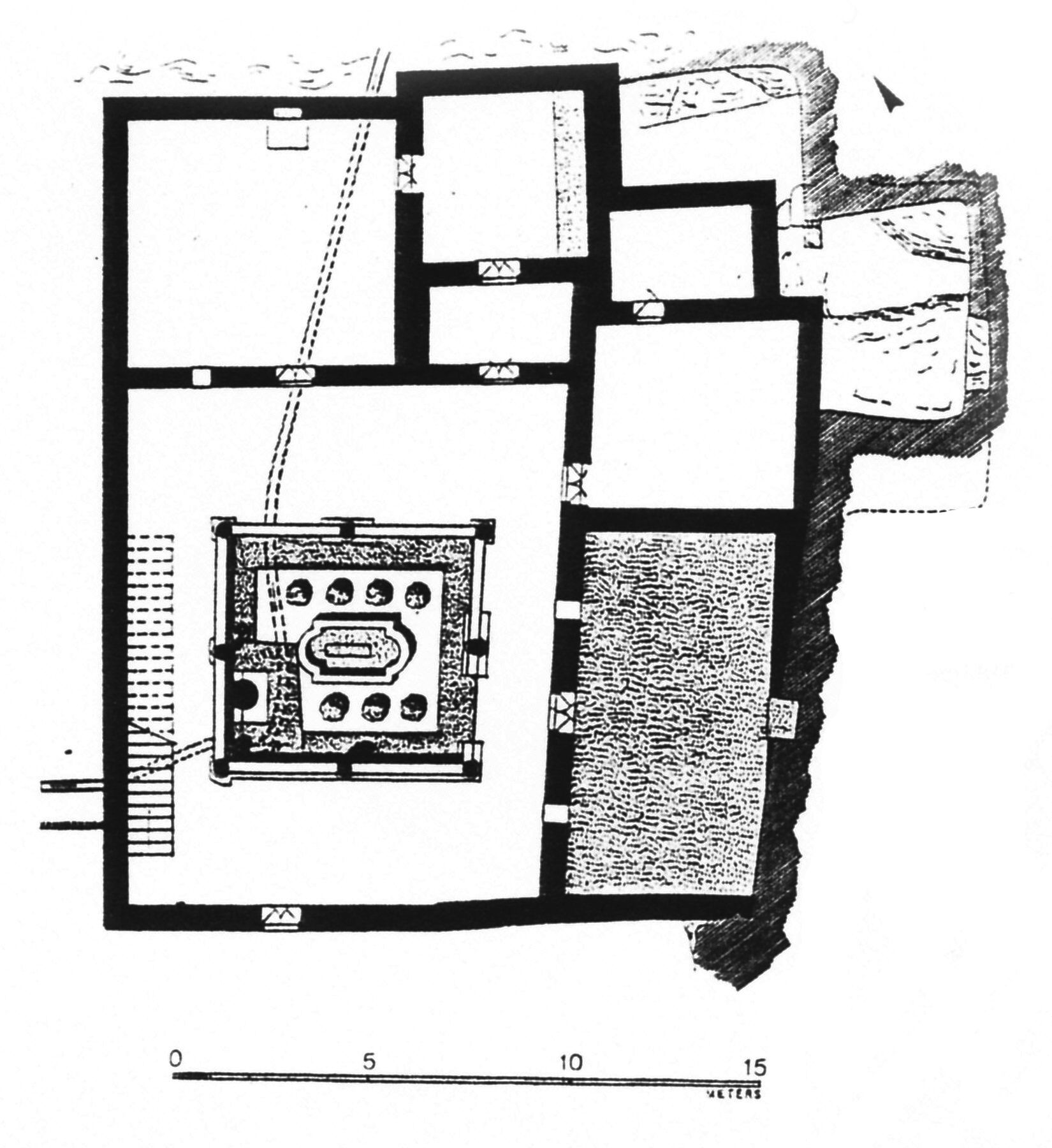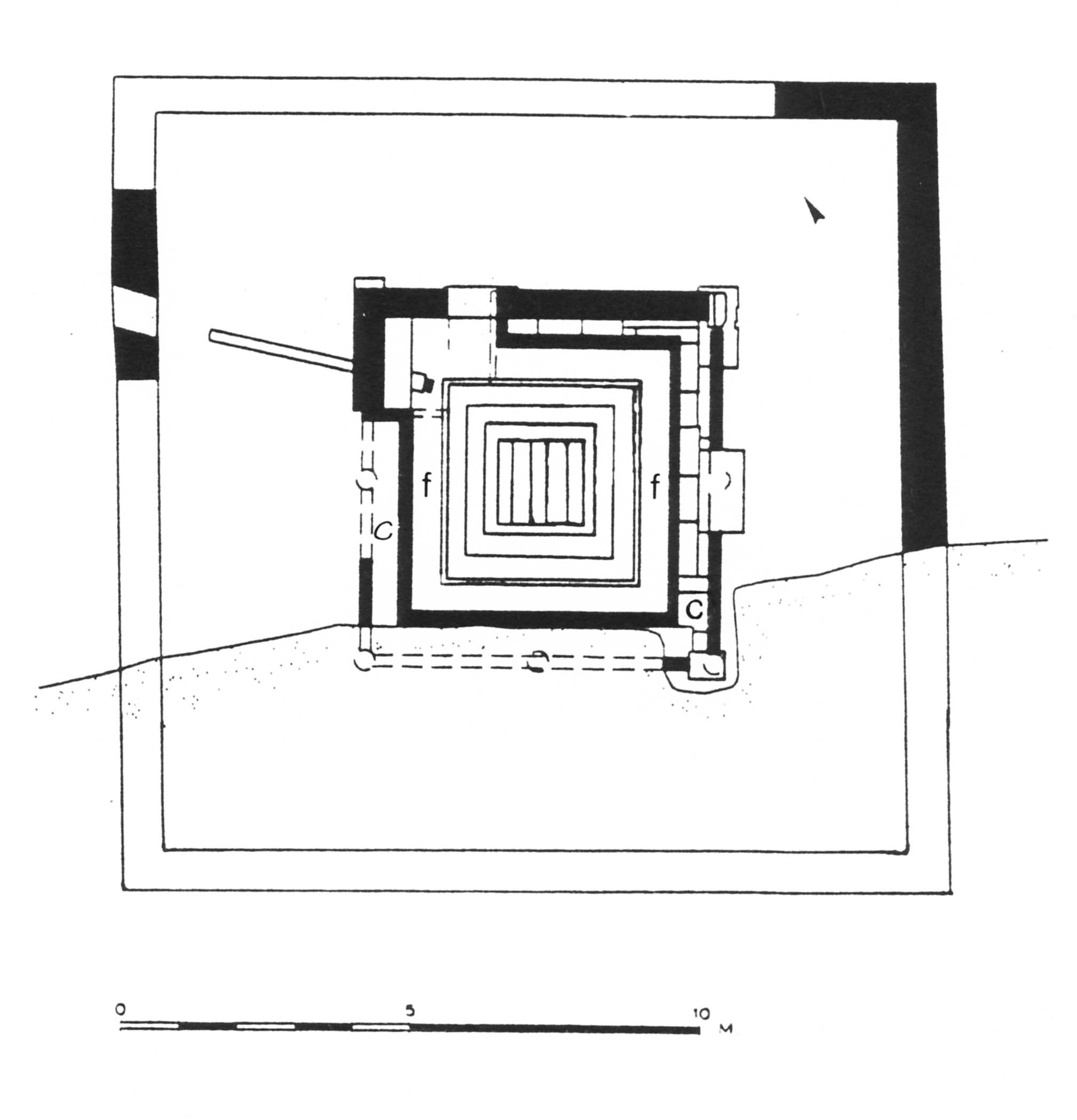Urban Houses Near the Areopagus
Province
Province Description
Roman intervention in Greek political affairs resulted in conflicts that led to the destruction of Corinth in 146 B.C. and the sacking of Athens in 86 B.C. It was not until 27 B.C., however, that Augustus formally organized the Roman province of Achaea. Achaea consisted of the cities and territories of the southern Greek mainland between the Peloponnese and Thessaly, as well as Epirus in the northwest and the Ionian and some of the Aegean islands. The provincial capital was Corinth. Under Nero in the mid-1st century A.D. Epirus became a separate province, and in the mid-2nd century Thessaly was detached and added to the province of Macedonia. Under Roman domination many cities such as Athens, Sparta, Patras, and Corinth grew in size and prominence, the latter two partly owing to their importance as ports. After an initial decline in the number of rural sites in the early Empire, by the late Roman period the countryside was densely settled with farms and villas, due to changing landholding patterns and Roman improvements in agricultural and irrigation technology. The main exports from Achaea were wine, particularly from the northern Peloponnese, as well as olive oil and honey, linen and woolen textiles and marbles.
Location
Sublocation
Garden
Urban Houses near Areopagus
Keywords
- Archaeological
- basins (vessels)
- peristyles (Roman courtyards)
- pipes (conduits)
- piscinae
- planters (containers)
Garden Description
Several Roman houses in Athens make use of the remains of Classical and Hellenistic buildings, and, as far as we can tell, these houses generally had courtyards paved with marble chips, pebbles or tile set in mortar, rather than with gardens. One house on the northwest slope of the Areopagus, however, was of early Roman date and might have had a garden, since the surface of its peristyle courtyard was unpaved (Fig. 1). In the center of this courtyard was a rectangular water basin with apsidal ends, and in the southwest corner was a well. Another only partially excavated house of the mid-4th century A.D., built into the northern slope of the Areopagus, had a small courtyard (3.20 x 3.90 m.) paved with blue and white marble slabs surrounded by a masonry flower bed 50 cm. wide (Fig. 2; f on plan). Around this ran a shallow marble-paved basin (c on plan) which was supplied with water by a fountain on the south eastern side of the courtyard. Water flowed from the basin through a lead pipe in the middle of each side of the courtyard into the planter beds.
Plans

Fig. 1: Plan of an early Roman house with its possible garden courtyard and apsidal pool near the Areopagus. Adapted from Thompson and Wycherley 1972, p. 185, fig. 46.

Fig. 2: Paved courtyard with its flowerbeds (f) and surrounding water channel (c) in a late Roman house near the Areopagus. Adapted from Frantz 1988, pl.25a.
Dates
mid-4th century CE and earlier
Bibliography
- A. Frantz, Late Antiquity: A.D. 267-700. The Athenian Agora XXIV. Princeton, 1988, pp. 36-37, pls. 24a, 25a. (worldcat)
- H. A. Thompson and R. E. Wycherley, The Agora of Athens. The History, Shape and Uses of an ancient City Center. The Athenian Agora XIV. Princeton, 1972, p. 185, fig. 46. (worldcat)
Pleiades ID
TGN ID
Contributor
Maureen Carroll (ORCID: 0000-0001-9958-8032)
Publication date
21 Apr 2021